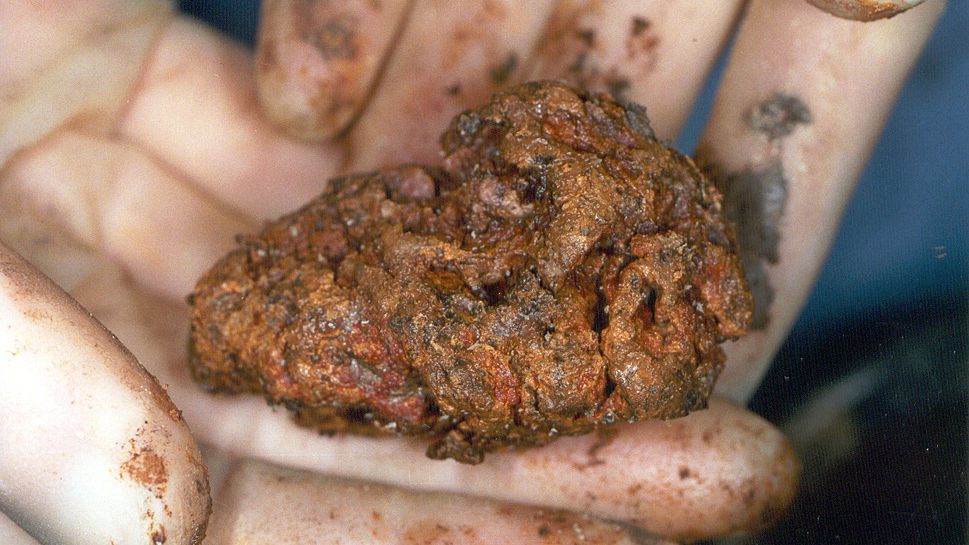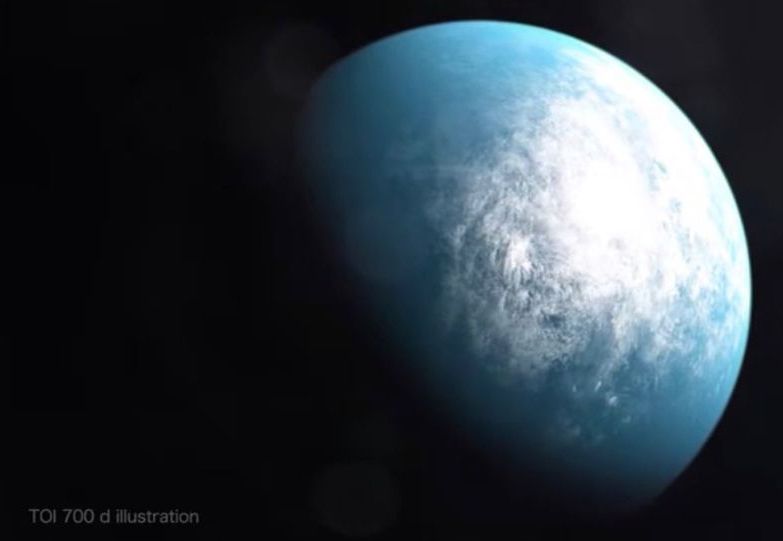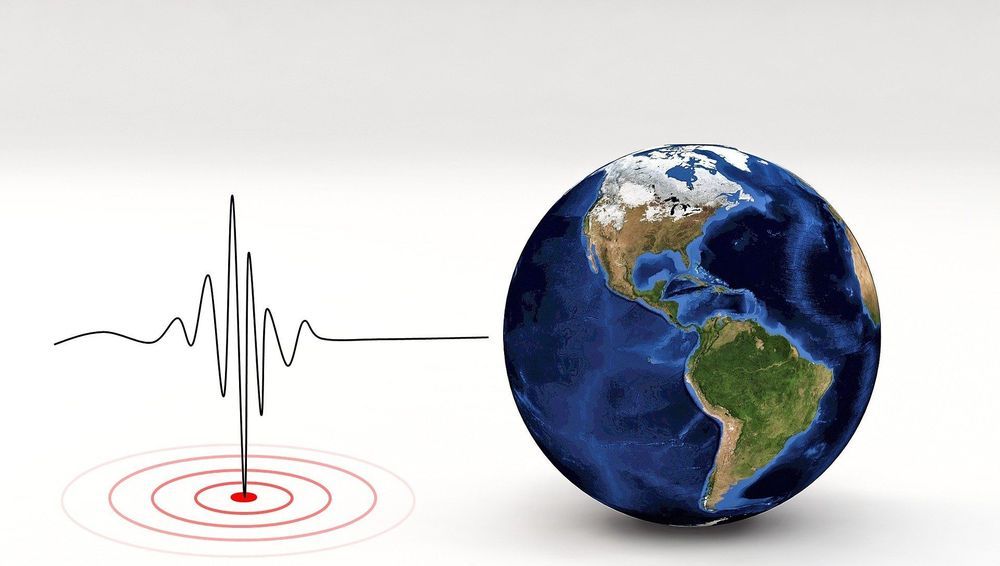Page 7988
Jan 7, 2020
NASA’s TESS Planet Hunter Finds Its 1st Earth-Size World in ‘Habitable Zone’
Posted by Paul Velho in categories: solar power, space
For the first time, the agency’s Transiting Exoplanet Survey Satellite (TESS) has discovered a roughly Earth- planet in the habitable zone of its host star, the zone of orbital distances where liquid water could be stable on a world’s surface.
NASA’s TESS Planet Hunter Finds Its 1st Earth-Size World in ‘Habitable Zone’ : Read more
Interesting, perhaps pushing the paradigm limits here. 86% of solar energy is similar to Precambrian earth during the Faint Young Sun, a snow ball earth. Part of the report that is a bit confusing to me is the comment “One of the other planets is a red dwarf about 40% as massive, 40% as wide and 50% as hot as Earth’s sun.” I think this is about the host star being a red dwarf star. Red dwarfs can be flaring stars and cause problems for *habitable* exoplanets. The Sun spins about 2 km/s at the its equator, red dwarf stars can spin faster like 4 km/s or faster, rotation periods 1 day to 10 days so red dwarfs can emit more flares. The report does comment “In 11 months of data, we saw no flares from the star, which improves the chances TOI 700 d is habitable and makes it easier to model its atmospheric and surface conditions,” discovery team leader Emily Gilbert, a graduate student at the University of Chicago, said in the same statement.
Jan 7, 2020
Magnitude of Great Lisbon Earthquake may have been lower than previous estimates
Posted by Saúl Morales Rodriguéz in category: futurism
The magnitude of the Great Lisbon Earthquake event, a historic and devastating earthquake and tsunami that struck Portugal on All Saints’ Day in 1755, may not be as high as previously estimated.
In his study published in the Bulletin of the Seismological Society of America, Joao F. B. D. Fonseca at the Universidade de Lisboa used macroseismic data—contemporaneous reports of shaking and damage—from Portugal, Spain and Morocco to calculate the earthquake’s magnitude at 7.7. Previous estimates placed the earthquake at magnitude 8.5 to 9.0.
Fonseca’s analysis also locates the epicenter of the 1755 earthquake offshore of the southwestern Iberian Peninsula, and suggests the rupture was a complicated one that may have involved faulting onshore as well. This re-evaluation could have implications for the seismic hazard map of the region, he said.
Jan 7, 2020
Microplastics Found in Human Gut for the First Time
Posted by Paul Battista in category: biotech/medical
Jan 7, 2020
SpaceX Just Launched a Fleet of Starlink Satellites. Here’s How to Spot Them in the Sky
Posted by Genevieve Klien in categories: internet, satellites

X just launched its latest batch of Starlink internet satellites, and you might be able to spot the craft overhead if you know where to look.
Jan 7, 2020
Cancer-like metabolism makes brain grow
Posted by Genevieve Klien in categories: biotech/medical, evolution, genetics, neuroscience
The size of the human brain increased profoundly during evolution. A certain gene that is only found in humans triggers brain stem cells to form a larger pool of stem cells. As a consequence, more neurons can arise, which paves the way to a bigger brain. This brain size gene is called ARHGAP11B and so far, how it works was completely unknown. Researchers at the Max Planck Institute of Molecular Cell Biology and Genetics in Dresden now uncovered its mode of action. They show that the ARHGAP11B protein is located in the powerhouse of the cell—the mitochondria—and induces a metabolic pathway in the brain stem cells that is characteristic of cancer cells.
The research group of Wieland Huttner, a founding director of the Max Planck Institute of Molecular Cell Biology and Genetics, has been investigating the molecular mechanisms underlying the expansion of the brain during mammalian evolution for many years. In 2015, the group reported a key role for a gene that is only present in humans and in our closest extinct relatives, the Neanderthals and Denisovans. This gene, named ARHGAP11B, causes the so-called basal brain stem cells to expand in number and to eventually increase the production of neurons, leading to a bigger and more folded brain in the end. How the gene functions within the basal brain stem cells has been unknown so far.
Takashi Namba, a postdoctoral scientist in the research group of Wieland Huttner, wanted to find the answer to this question, together with colleagues from the Max Planck Institute, the University Hospital Carl Gustav Carus Dresden, and the Department of Medical Biochemistry at the Semmelweis University, Budapest. He found that the ARHGAP11B protein is located in mitochondria, the organelles that generate most of the cell’s source of chemical energy and hence are often referred to as the powerhouse of the cell. Takashi Namba explains the results: We found that ARHGAP11B interacts with a protein in the membrane of mitochondria that regulates a membrane pore. As a consequence of this interaction, the pores in the membrane are closing up, preventing calcium leakage from the mitochondria. The resulting higher calcium concentration causes the mitochondria to generate chemical energy by a metabolic pathway called glutaminolysis.
Jan 7, 2020
Samsung made a rolling robot called Ballie that runs your smart home
Posted by Genevieve Klien in categories: habitats, robotics/AI
Jan 7, 2020
Vladimir Putin: Russia has edge in new weapons
Posted by Kaiser Matin in categories: government, military, space
“Now we have a situation that is unique in modern history when they are trying to catch up to us,” he said. “Not a single country has hypersonic weapons, let alone hypersonic weapons of intercontinental range.”
The Pentagon and the U.S. military services have been working on the development of hypersonic weapons in recent years, and Defense Secretary Mark Esper said in August that he believes “it’s probably a matter of a couple of years” before the U.S. has one. He has called it a priority as the military works to develop new long-range fire capabilities.
The U.S. also has repeatedly warned Congress about hypersonic missiles being developed by Russia and China that will be harder to track and defeat. U.S. officials have talked about putting a layer of sensors in space to more quickly detect enemy missiles, particularly the more advanced hypersonic threats. The administration also plans to study the idea of basing interceptors in space, so the U.S. can strike incoming enemy missiles during the first minutes of flight when the booster engines are still burning.
Jan 7, 2020
‘Libya is ground zero’: drones on frontline in bloody civil war
Posted by Mike Diverde in category: drones

Drone War
Civilian casualties are mounting as opposing sides deploy cheap Turkish and Chinese-made aircraft by Dan Sabbagh, Jason Burke and Bethan McKernan.
Continue reading “‘Libya is ground zero’: drones on frontline in bloody civil war” »
Jan 7, 2020
The ‘Goldilocks’ principle for curing brain cancer
Posted by Kaiser Matin in categories: biotech/medical, neuroscience
In the story of Goldilocks, a little girl tastes three different bowls of porridge to find which is not too hot, not too cold, but just the right temperature. In a study published in Advanced Therapeutics, University of Minnesota Medical School researchers report on a “Goldilocks” balance which holds the key to awakening the body’s immune response to fight off brain cancer.
The most common form of adult brain cancer is glioblastoma. Doctors diagnose about 14,000 glioblastoma cases in the U.S. each year. This aggressive cancer has claimed the lives of Senators John McCain and Edward Kennedy.
“Our body has armies of white blood cells that help us fight off bacteria, viruses and cancer cells. This constellation of cells constitute our immune system,” said senior author Clark C. Chen, MD, Ph.D., Lyle French Chair in Neurosurgery and Head of the Department of Neurosurgery at the University of Minnesota Medical School. “One of the key reasons why glioblastoma is so aggressive is that it shuts off this immune system.”
















